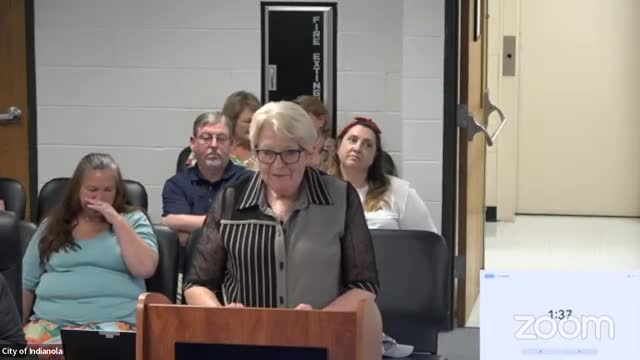Residents clash over backyard chicken regulations and complaints
August 20, 2024 | Indianola, Warren County, Iowa

This article was created by AI summarizing key points discussed. AI makes mistakes, so for full details and context, please refer to the video of the full meeting. Please report any errors so we can fix them. Report an error »

During a recent council meeting in Indianola, significant concerns were raised regarding proposed regulations for backyard chickens, primarily from local residents. The discussions highlighted the potential for ongoing disputes and complaints if the ordinance is passed, with many chicken owners expressing their objections to increased oversight.
One resident articulated fears that the introduction of stricter regulations would not resolve issues related to noise, odor, and waste management, which are common complaints associated with keeping chickens. The resident emphasized that even with existing planning and zoning rules, the challenges of managing chicken waste and the potential for neighborhood disputes would persist. They expressed skepticism about the effectiveness of good intentions in achieving positive outcomes, stating, \"I live in a real world where good intentions don't equal good results.\"
Concerns were also raised about the financial implications of enforcing these regulations. Another resident pointed out that increased code enforcement would likely require additional personnel, which could lead to higher taxes for residents already facing significant increases in their tax estimates. This sentiment was echoed by others who feared that the financial burden of managing complaints from chicken owners would not be well-received by the community.
In contrast, some residents expressed a willingness to comply with certain regulations to maintain the ability to keep chickens, acknowledging the need for balance between property rights and community standards. One resident, who lives on a larger property within city limits, noted that concerns about neighboring properties could extend beyond chickens to other potential nuisances, such as dog kennels or unkempt yards.
The meeting underscored the complexities of regulating backyard chickens in urban settings, as residents grapple with the implications for community harmony, property values, and local governance. As discussions continue, the council faces the challenge of addressing these concerns while considering the interests of both chicken owners and their neighbors.
One resident articulated fears that the introduction of stricter regulations would not resolve issues related to noise, odor, and waste management, which are common complaints associated with keeping chickens. The resident emphasized that even with existing planning and zoning rules, the challenges of managing chicken waste and the potential for neighborhood disputes would persist. They expressed skepticism about the effectiveness of good intentions in achieving positive outcomes, stating, \"I live in a real world where good intentions don't equal good results.\"
Concerns were also raised about the financial implications of enforcing these regulations. Another resident pointed out that increased code enforcement would likely require additional personnel, which could lead to higher taxes for residents already facing significant increases in their tax estimates. This sentiment was echoed by others who feared that the financial burden of managing complaints from chicken owners would not be well-received by the community.
In contrast, some residents expressed a willingness to comply with certain regulations to maintain the ability to keep chickens, acknowledging the need for balance between property rights and community standards. One resident, who lives on a larger property within city limits, noted that concerns about neighboring properties could extend beyond chickens to other potential nuisances, such as dog kennels or unkempt yards.
The meeting underscored the complexities of regulating backyard chickens in urban settings, as residents grapple with the implications for community harmony, property values, and local governance. As discussions continue, the council faces the challenge of addressing these concerns while considering the interests of both chicken owners and their neighbors.
View full meeting
This article is based on a recent meeting—watch the full video and explore the complete transcript for deeper insights into the discussion.
View full meeting
